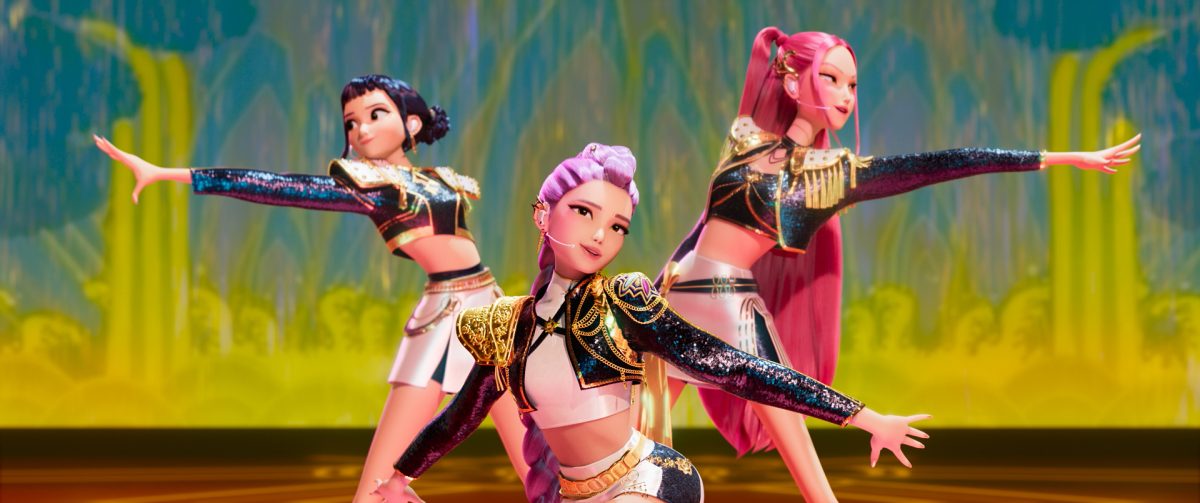With Disney’s “Moana 2” ruling the box office over Thanksgiving break, those who enjoy watching the result of drawn-out characters and the process behind these animations should consider spending two hours on a documentary named after the man behind Japan’s Studio Ghibli.
Directed by Kaku Arakawa, the documentary compels the audience in its focus on the 82-year-old Hayao Miyazaki’s longtime friend and Studio Ghibli co-founder, Isao Takahata, who died of old age in 2018.
As shown in monologues and montages, Miyazaki struggled greatly in the aftermath of Takahata’s death. Working on The Boy and the Heron, it is clear that grief considerably affected his experience. The documentary shows that the process was a deeply personal journey for Miyazaki. Oftentimes, the mood is somber — even depressing — as he grapples with deaths and frustration with his illustrations.
Though the COVID-19 pandemic was an obstacle for many during this time, the feature film opts to focus more on unrelated deaths, instead representing the challenges of this era with the plethora of face masks worn by the Studio Ghibli crew.
To fully understand the nuances of the documentary, viewers should first consider watching Ghibli’s latest work, “The Boy and the Heron,” which explores themes of loss, identity and the complexities of growing up. The movie follows Mahito Maki, a young boy grappling with the profound grief of losing his mother during World War II. As Mahito navigates a world full of sorrow and uncertainty, he embarks on a fantastical journey that intertwines his reality with dreams.
One interesting aspect of the film and its maker is that the protagonist, Mahito, mirrors Miyazaki’s own childhood. In fact, every character in The Boy and the Heron is inspired by someone in the director’s life, successfully adding to the already intricate storytelling.
Furthermore, the beautiful dreamworld Mahito visits is essentially a blend of every Studio Ghibli movie universe, Miyazaki’s way of paying homage to his previous works.
VIDEO CUTLINE: Studio Ghibli’s latest animated film, directed by Hayao Miyazaki, blends fantasy and reality in a tale of grief, self-discovery and the magic of nature. (Video used with permission from Madman Films)
The documentary gives viewers behind-the-scenes footage that captures the meticulous craftsmanship involved in traditional hand-drawn animation. It highlights Miyazaki and Studio Ghibli’s commitment to preserving the artistry of animation in an age increasingly dominated by computer-generated imagery. In a pivotal scene, viewers see Miyazaki hunched over a stack of rough pencil sketches. “In each line, there is a piece of the artist’s soul,” he says in voiceover, his words followed by footage of other Ghibli animators laboring over minute details.
Although the documentary stars Miyazaki, it doesn’t shy away from showing the audience how his perfectionism and workaholic tendencies can be frustrating to those around him. Discussed by another Studio Ghibli co-founder, Toshio Suzuki, this insight adds depth to the documentary, illustrating that the process of creating Ghibli’s signature magical worlds can indeed be fraught with difficulty and emotional strain, but also providing viewers with a more intimate understanding of Miyazaki as an artist and individual.
“Hayao Miyazaki and the Heron,” released earlier this fall in September on Max streaming service, is a compelling watch because of its unabashed vulnerability — it acknowledges that life is not merely a series of triumphs but woven with loss and, consequently, growth. By embracing the imperfections and emotional weight of his experiences, Miyazaki invites audiences to reflect on their own struggles and the beauty that can emerge from facing them.














